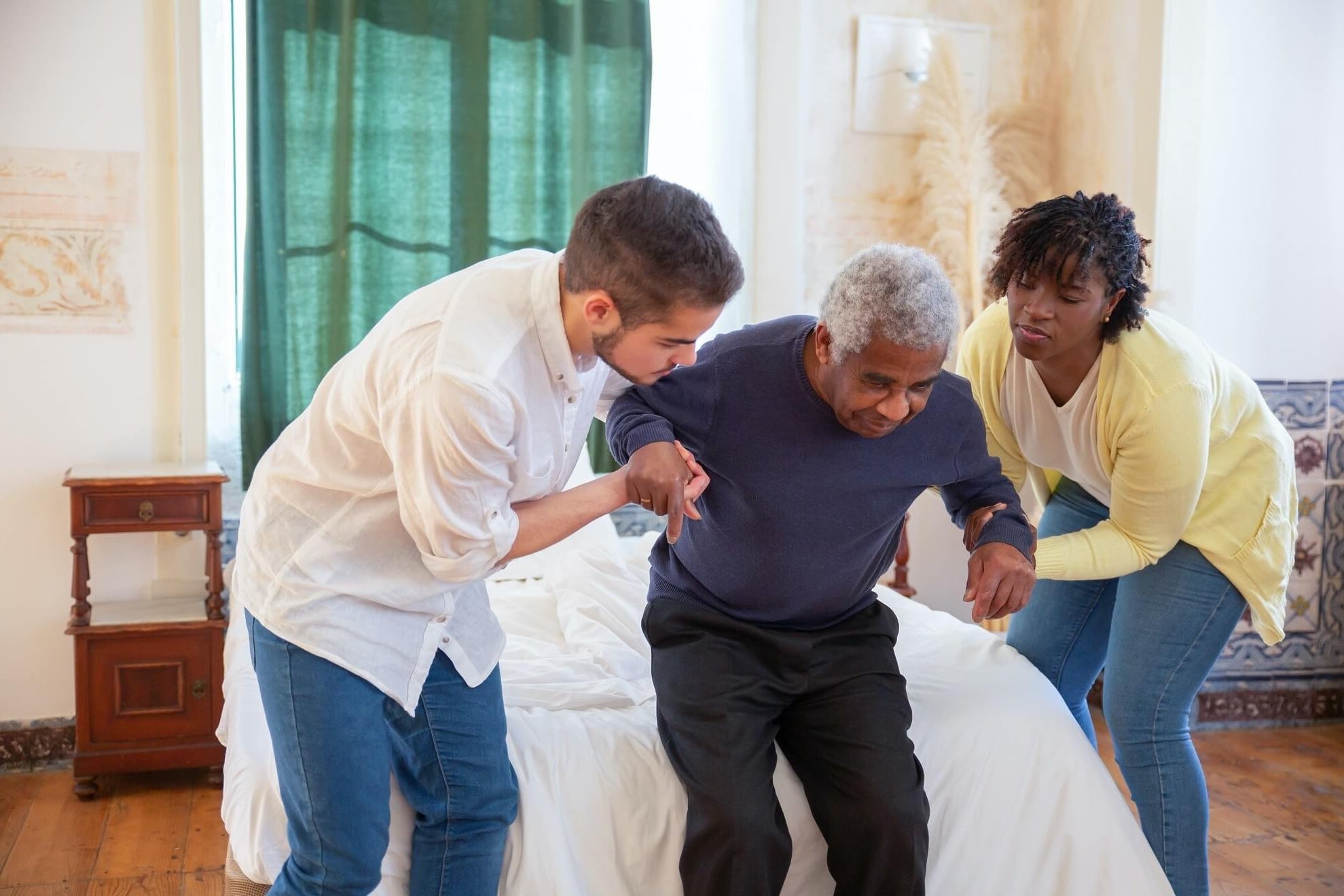
Moving & Handling Training For Carers
Level 2 Award in Moving People Safely (RQF)
2 Days
Explore This Course.
Manual Handling Training > Manual Handling Training for Carers
Course Description
Is this course suitable for me?
This regulated and nationally recognised manual handling course provides you with the opportunity to develop your skills. It will also help you understand the key concepts related to moving objects and people.
Our Level 2 Award in Moving People Safely (RQF) is perfect for those who work in a variety of health and social care settings, such as care homes. This course was specifically designed for professions that require assisting and moving people. We also offer the 1 day Level 2 Award in Principles and Practice of Moving People Safely (RQF).
On this course, you have the opportunity to practice a variety of skills that are applicable in your workplace.
How long is the manual handling training for carers course?
The Level 2 Award in Moving People Safely (RQF) course lasts 2 Days. We can deliver the course on site at your workplace or an offsite training venue.
We also offer the 1 day Level 2 Award in Principles and Practice of Moving People Safely (RQF) which is particularly popular with care organisations.
What’s covered on the level 2 Award in Moving People Safely course?
Over the course of two days, learners will gain the knowledge and skills related to manual handling of objects as well as safe moving and handling of people. The following topics are covered:
-
Common Handling Injuries
Learners explore the types of injuries that can occur during moving and handling tasks, such as back strain, muscle tears, and joint injuries. The session highlights how poor technique, awkward postures, and rushing can lead to both immediate and long-term harm. Understanding these risks helps staff recognise why correct methods and team communication are essential.
-
The Potential Impact On A Person If Moved Incorrectly
Incorrect handling can cause serious harm to the person being supported. This may include skin tears, bruising, falls, or loss of confidence and trust. Learners discuss how inappropriate handling can also worsen existing conditions or injuries, and why good technique protects both comfort and safety.
-
Personal Handling Plans
The course explains the purpose of personal handling plans and how they ensure safe, consistent care tailored to each individual’s needs. Learners examine what information these plans should include, who is responsible for maintaining them, and how to follow them accurately in day-to-day work.
-
Preserving Dignity
Moving and handling are not just physical tasks—they are moments of personal interaction. Learners consider how to protect a person’s dignity and privacy throughout the process, using respectful communication, consent, and appropriate coverings or positioning. Maintaining dignity supports trust and wellbeing.
-
Health & Safety When Moving A Person
This section covers the key legal and practical principles of safe moving and handling, including dynamic risk assessment, posture, and teamwork. Learners link these to relevant legislation and their own workplace policies, ensuring they understand both their responsibilities and rights.
-
Using Equipment
Learners gain hands-on experience with common moving and handling equipment such as hoists, slide sheets, and transfer aids. The focus is on pre-use checks, correct application, and safe storage. Emphasis is placed on matching equipment use to the individual’s needs and ensuring competence before use.
Assessment
6 x Practical assessments and 2 x Theory assessments (Multiple Choice Question Papers).
FAQ’s
-
From 2020 to 2021 there were 162,000 workers who suffered from a new work-related musculoskeletal problem.
Data also shows that those working in construction as well as human health and social work are at higher risk than that of other occupations.
Reference:
-
The HSE state that if risks from moving and handling are to be managed successfully, there must be support from those at the top of the organisation, whatever its size. This can be expressed in a clear statement of policy – supported by organisational arrangements – to ensure that the statement is implemented. Key elements include:
recognition of the risks
commitment to introducing precautions to reduce that risk
a statement of clear roles and responsibilities
an explanation of what is expected from individual employees
arrangements for training and providing / maintaining equipment
arrangements for monitoring compliance
a commitment to supporting people who have been injured in connection with their work
Reference:
https://www.hse.gov.uk/healthservices/moving-handling-do.htm
-
Sometimes, businesses choose to invite us to their venue which means reduced course costs and less downtime for the workforce. We can also arrange suitable training facilities where training at your location is not suitable. We can run manual handling courses all over Norfolk and surrounding counties such as Suffolk, Lincolnshire and Cambridgeshire.
Book Online.
Simply complete our enquiry form and let us know what you need. We’ll get back in touch as soon as possible.
